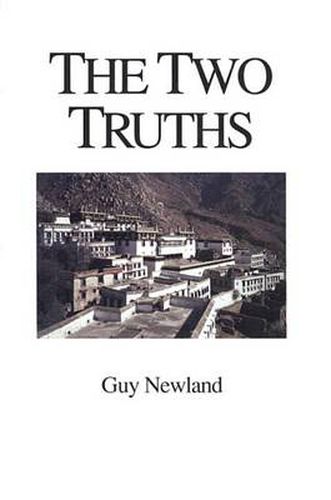Readings Newsletter
Become a Readings Member to make your shopping experience even easier.
Sign in or sign up for free!
You’re not far away from qualifying for FREE standard shipping within Australia
You’ve qualified for FREE standard shipping within Australia
The cart is loading…






A Namgyal Monastery Institute Textbook & Studies in Indo-Tibetan Buddhism Series
The persistent problem of Buddhist philosophy has been to find the middle way-an ontology sturdy enough to support a coherent ethical system that does not betray Buddha’s original vision of no-self or emptiness (sunyata). Buddhist perspectives on ethics and emptiness center on the distinction between two truths-the conventional and the ultimate. Newland’s work lays out the Madhyamika philosophy of two truths as seen through the eyes of Tibetan scholar-yogis of the Gelugpa order. Linking the classical Buddhist philosophy of Nagarjuna with the living tradition of monastic courtyard debate, the authors explain the two truths without resort to mysterious trans-rational paradoxes. Newland exposes their extraordinary efforts to clear away the sense of contradiction between emptiness and conventional reality and thus to build a Madhyamika system that is both ethically salutary and rationally coherent.
$9.00 standard shipping within Australia
FREE standard shipping within Australia for orders over $100.00
Express & International shipping calculated at checkout
A Namgyal Monastery Institute Textbook & Studies in Indo-Tibetan Buddhism Series
The persistent problem of Buddhist philosophy has been to find the middle way-an ontology sturdy enough to support a coherent ethical system that does not betray Buddha’s original vision of no-self or emptiness (sunyata). Buddhist perspectives on ethics and emptiness center on the distinction between two truths-the conventional and the ultimate. Newland’s work lays out the Madhyamika philosophy of two truths as seen through the eyes of Tibetan scholar-yogis of the Gelugpa order. Linking the classical Buddhist philosophy of Nagarjuna with the living tradition of monastic courtyard debate, the authors explain the two truths without resort to mysterious trans-rational paradoxes. Newland exposes their extraordinary efforts to clear away the sense of contradiction between emptiness and conventional reality and thus to build a Madhyamika system that is both ethically salutary and rationally coherent.